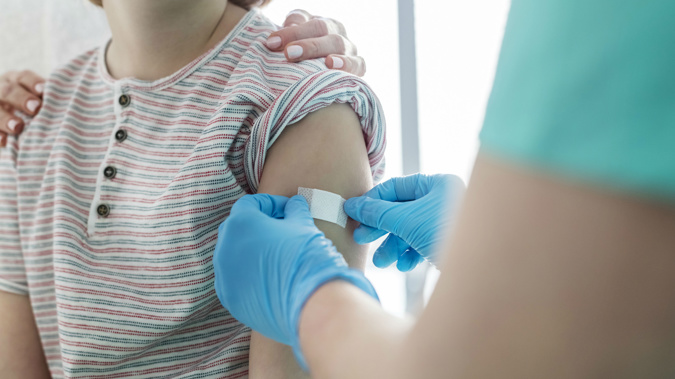
A mumps outbreak has worsened across Auckland with nearly 500 cases of the highly infectious disease registered this year and numbers surging in the last month.
Experts are blaming flagging vaccination rates for the outbreak and urge parents to ensure children's immunisation are up to date.
As of yesterday, there were 457 confirmed and probable mumps cases reported to the Auckland Regional Public Health Service. Last year, only 13 confirmed cases were reported throughout the city.
The number of cases has ballooned this month with 157 new cases reported since early September when the public health service announced there had been 300 cases.
The majority of the cases reported had been in West and South Auckland.
Otago University public health Professor Michael Baker said the numbers reported were likely to be "only a fraction" of the people who had mumps.
While a high number of children were often hospitalised during a mumps outbreak, it could be a mild illness for others who would not bother going to see a doctor, he said.
Low income people were also less likely to go to a doctor and be counted when it came to infectious diseases like mumps, he said.
Manurewa High School was just one of the schools affected by the outbreak.
The school's business manager Julie Lockie said there had been about six or seven students who had contracted the mumps this term with one new case reported this week.
She said students who tested positive for the mumps stayed away from school until they had recovered.
The school had sent information about the disease to parents and was encouraging them to ensure children were up-to-date with their immunisations.
Auckland Regional Public Health Service clinical director Dr Julia Peters said the outbreak was being fueled by low immunisation rates, with about 80 per cent of those who had contracted the disease not fully vaccinated.
Children are vaccinated against measles, mumps and rubella at 15 months and four years. In the year to June, 88 per cent of 5-year-olds were vaccinated.
Peters said the majority of mumps cases this year were people aged between 10 and 29 years.
A cluster of schools in West Auckland were also at risk of a whooping cough outbreak, according to the Auckland Regional Public Health Service.
Several students at Laingholm Primary School had been affected, causing the school's live production to be called off.
Medical Officer Dr Michael Hale said the outbreak was localised in two small clusters.
"In the last month, we've had 33 new cases. It's one of these infectious diseases that waxes and wanes and we don't ever really get rid of it in New Zealand."
Laingholm Primary School principal Martyn Weatherill said several students, parents and siblings had been affected, with new cases continuing to be found.
Across the country there were 143 cases of whooping cough, also known as pertussis, notified between August 19 and September 15 - a significant increase on the 74 cases reported in the same period last year. For the year to September 15, there has been 938 probable, confirmed and suspected cases.
Dr Michelle Conning from the Titirangi Medical Centre said about a third of the students at Laingholm Primary were not immunised which was a huge concern to her.
"At the moment we're definitely dealing with whooping cough but, with our low immunisation rates, it's probably not long before this happens with a more serious illness."
Lack of access to vaccinations was not the problem in the area, she said. Rather it seemed to be pockets of people who were anti-vaccination.
The low immunisation rate in the area was a large part of the reason outbreaks often hit the area hard, she said.
Hale agreed areas with less coverage often tended to feature more frequently in outbreaks.
Mumps
• Mumps is a serious and highly infectious viral disease prevented by the measles-mumps-rubella (MMR) vaccination.
• Mumps is spread from an infected person by saliva or mucous droplets when coughing, sneezing, or talking. It can be spread via face to face contact within a metre, or by touching an object infected from saliva and mucous, such as a used tissue or keyboard.
• Early symptoms include fever, headache, muscle aches, tiredness, and loss of
appetite. The salivary glands on one or both sides of the face, cheeks or jaw may become
swollen and sore after two days.
• Some people can develop rare complications such as pain and swelling in the testicles or ovarian inflammation.
Whooping cough (Pertussis)
• Whooping cough is a serious and highly infectious disease and is spread by direct contact with fluids from the nose or mouth of infected people.
• Young children, especially babies under 12 months, and people with weak immune systems (immunocompromised) can become very ill and occasionally die from whooping cough.
• Whooping cough begins with a runny nose, fever and a dry cough, which develops into long coughing attacks. In babies and young children, coughing attacks often end with a "whoop" sound when breathing in, or with vomiting or gagging. Babies can have trouble feeding or breathing.
Take your Radio, Podcasts and Music with you









